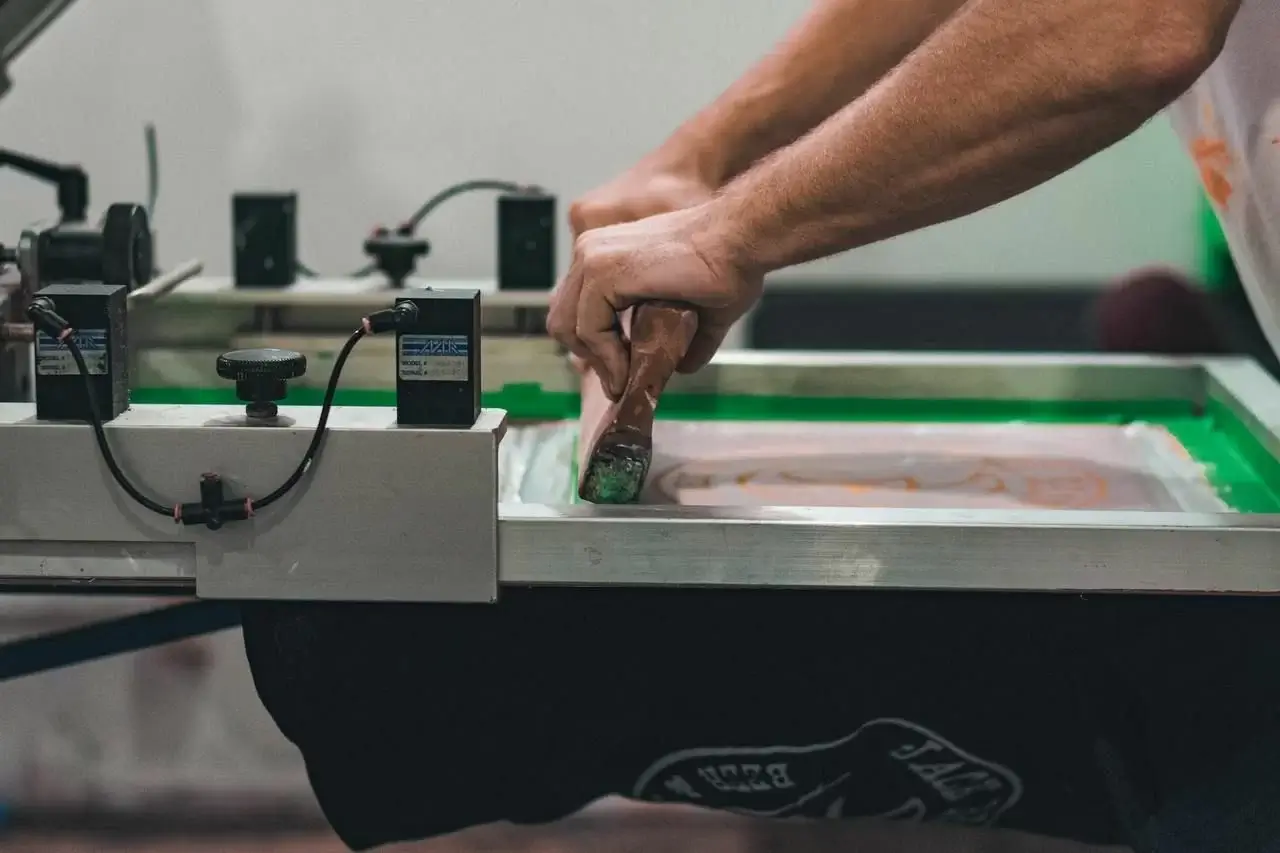Sublimation vs. Screen Printing. Understand the Difference

Are you interested in modifying your t-shirt design ideas? Would you like to make them look even better by personalizing them? You can use sublimation or screen printing screens!
What is the difference between screen printing and sublimation? Sublimation and screen printing are two different techniques. Both create high-quality and long-lasting prints. Chemical procedures are used in the initial sublimation printing to bond with the polyester filaments. It consumes less time.
Sublimation print vs. screen print employs a heat source of thick inks and stencils. Thus occupying much more time.
People use two different types of prints while practicing printing, especially on ceramics or fabrics. Sublimation versus silk screen printing. Both of them lead to pleasing results. Want to know more about the Screen printing vs. sublimation debate? Continue reading with us.
- What is Screen Printing?

This method is also known as Silk Screening or Serigraphy. It’s one of the earliest forms of printed art. It is one of the most popular ways to customize textiles and people have used this form for ages. Furthermore, it produces a thick and raised pattern on the ceramic’s outside.
-
History of Screen Printing
Screen Printing remained a simple process in the 19th CE. In the 20th CE, people started to use machines for printing posters. They then used fabrics over wooden frames. At first, it was a bridge between the automated printing process and hand-fed production.
- Screen Printing in the Present
Screen Printing is a sophisticated process. It uses ink, fabrics, and computers to design logos or anything like that. You can use Silk Screening to print layers of images on any surface. This includes leather, glass, wood, plastic, paper, fabric, and cards.
- How does Screen Printing work?
the printer uses a stencil of the chosen image and places it on the substrate. Later one pours the ink onto the stencil and spreads it all over the stencil. With the help of cotton, we apply ink to force it through the screen and onto the textile. The ink seeps into the fabric from the pours.
-
Why use Screen Printing?
Silk screening is popular because it also creates vivid colors on dark pottery. Because the ink remains in the fabric’s layers, it has a high quality. Moreover, people prefer using this method. One can use the same stencil to reproduce the same design.
So, it facilitates the creation of several copies of the same cloth. Screen printing is an efficient technique. It helps create large batches of customized garments for sports teams or other purposes. Moreover, it permits more intense coloring.
Step-By-Step Process of Screen Printing
. Step 1: Design creation
- 2: Preparing the Screen
- 3: Exposing the mixture
- 4: Stencil creating by washing off the emulsion
- 5: getting the item ready for printing
- 6: Pressing the ink through the screen against the fabric
- 7: The ceramic is dried finished and checked
A screen print requires a lot of knowledge and effort to set up. Yet you can use the screen many times after you have used it once. To create more of the same designed articles, one can keep utilizing the printing screens as many times as necessary.
Although Screen Printing is a traditional method it is still practiced. To transfer the design onto the fabric, screens are used. It is therefore perfect for straightforward patterns. Also, it is easy to screen-print large volumes of shirts once the initial setup is complete.
In Screen Printing the design becomes the top layer while screening each color. One can make designs by using many colors or one shade of ink.
Goods Needed For Screen Printing
- Transfer Tape
- Heat Press
- Screen Printing with Vinyl Starter Kit
- Cricut Maker
- Painter’s Tape
Sublimation Printing
- What is Sublimation Printing?
Businesses use sublimation to transfer their logos or pictures onto anything. They can do this with cell phone cases, mugs, or t-shirts. They use sublimation for their t-shirt businesses. It is a friendly and easy transfer process that does not add layers on top. Also, it is cheaper and lasts longer without fading peeling, or cracking.
- History of Sublimation Printing
Stamps were used in the past to imprint images on clothing. People used small clay or metal stamps and seals for decoration. They used them to print identical pictures.
-
Sublimation in the present
Later on, Dye-Sublimation Machines came into play. People used these machines to transfer dye onto materials. These materials include fabric, plastic, and paper. They did this with the help of heat. Printing makes it possible to print magazines, newspapers, and books in bulk. This spreads information and increases literacy.
- How does Sublimation Printing work?
Sublimation dyes are sent onto a transfer paper. Then, they’re transferred onto polyester material, such as a t-shirt. This is done using heat and pressure. The ink moves from the transfer paper to sit on the fabric. Thus when the ink cools down it appears glossy and becomes a permanent part of the garment.
Is sublimation better than vinyl? Sublimation printing is a fantastic choice if your company focuses on producing white and light-colored polyester clothing. Your prints will be durable and washable even with the lightest hand. Heat transfer paper is your best bet still if you want to print on any color or kind of material.
Step-By-Step Process of Sublimation Printing
- Step 1: Design drafting
- Step 2: Printing the pattern onto the transfer paper with sublimation inks
- Step 3: The Sublimation Process
- Step 4: Sewing and cutting of the sublimated fabric
- Step 5: Complete the garments created
Types of Sublimation Transfers
Calendar Heat Press
When sublimating on softer and larger surfaces such as fabric Calendar Heat Press will be the way to go. It is a large press that accommodates printing on banners and clothes.
Flatbed Heat Press
When sublimating on hard surfaces like floor tiles or home décor, people appreciate it. It is adaptable and suitable for printing on clothing.
3D Vacuum Heat Press
When dealing with small objects with a range of shapes someone may recommend you a 3D Vacuum Heat Press. This machine especially helps for non-flat surfaces to be sublimated.
Small Heat Press
People will recommend it for sublimating small items. For example, creating a pattern on kitchenware. It takes up a small amount of space and is helpful for many things.
Sublimation Printing Materials
Not many polyester-coated materials require distinct techniques when employing the Sublimation Printing technique.
- Polymer (Teflon and Nylon)
- Ceramic (Vases mugs tiles)
- Fabric (Custom tents tablecloths t-shirts dresses)
Materials Needed For Sublimation Printing
- Heat Press
- Hiipoo Sublimation Ink
- Epson ET-3760 Printer
- Sublimation Paper
- Lint Roller
- Heat Resistant Tape
- Teflon Sheet (Butcher Paper)
Sublimation
- Advantages of Sublimation
Sublimation Printing lets you print everything in one piece. You don’t need to pay extra for different designs or colors.
- Since the ink becomes a part of the fabric, there is less chance that the garment will peel, fade, or chip. As a result, the clothing is lighter, cleaner, and more durable.
- You can use as many colors and graphics as you desire while using sublimation. The variety of designs and color combinations is endless. Furthermore, the cost remains unchanged whether producing ten units or a hundred.
- One can print the same design or brand on another garment without having to pay setup fees again.
Better and cleaner printing is possible with sublimation printing. It allows for a lesser mess than Screen Printing.
- Disadvantages of Sublimation Printing
The ideal polyester textiles for sublimation printing are light or white ones. It would fail to work on dark colors because it uses transparent inks.
- It works well only on polymer-coated or polyester surfaces. And not on fabrics that have less than two-thirds of polyester.
- The sublimation printers and heat presses are expensive. The person who begins with sublimation printing services has to invest a lot of money in setup costs.
- Benefits of Screen Printing
An individual willing to set up screen printing can choose from a diverse range of inks. The inks can help you produce special effects. With the correct type of ink, one can create foil or 3D designs.
You can screen print on any textile material as long as it has a flat surface.
- For large quantities of textiles with the same design, screen printing is an affordable option. People who want to start screen printing or sublimation at home can afford to buy them.
- There are fewer details. Screen printing is therefore a great option for graphic names or logos. Yet it may not be suitable for intricate designs or photography.
- The designs produced by Screen Printing are durable compared to Digital Printing Designs. Additionally, screen-printed designs are resistant to fading and sunshine.
- Drawbacks of Screen Printing
- If an individual wants to use many colors they will have to add each color. So increasing the production time and adding up to costs.
- When doing Screen Printing one can use a limited amount of colors. Thus resulting in simple designs.
- If you are making a single t-shirt it may cost more as screen printing is a lengthy process. therefore increasing the expenses and needing more time.
- Screen Printing cannot add details to the designs. Therefore, those who desire technical details favor other printing techniques.
- People who desire long-term prints should not prioritize this design because it may fade, peel, or crack over time.
Screen Print or Sublimation – Differences
- The fabric absorbs the ink making it a permanent part of itself Sublimation.
- Silk Screening involves squeegee ink stencils and screens
- Sublimation paper, a heat press, and a computer are needed for sublimation
- Serigraph Printing occupies more time to complete the production than Sublimation.
- Sublimation saves time and is easier to print.
- Screen printing can be more inaccurate and messier than sublimation.
- When sublimating, a variety of colors and patterns can be used.
Serigraphy is effective for batch production. For customized orders, sublimation printing is preferable.
- Sublimation is more durable than screen printing and is unlikely to crack fade or peel.
- Screen printing is possible on any type of fabric.
Screen Printing or Sublimation – FAQs
Sublimation or Screen Printing: Which is Better?
Considering fabric customization. it is impossible to select the best from the two printing techniques. The options are sublimation and screen printing. Screen printing would be the greatest choice if you wanted to move forward with larger volumes of cloth modification on a restricted budget. If you have extra money and want realistic patterns. sublimation printing is better for you.
Is sublimation printing better than screen printing?
Sublimation printing and screen printing both create high-quality unique designs on fabric. If you cannot decide between the two, keep reading below for a quick debate.
Which is better: sublimation or screen printing?
Sublimation printing creates multi-color design prints. It is durable because the dye becomes a part of the fabric. Also, it does not fade crack, or peel with time and creates vibrant designs on flat fabric. But it only works on polyester and looks best on white or light surfaces.
A distinctive textured design is produced by screen printing or silk screening. Even though the design holds up after a few washings, it could chip. It is cheap to use screen printing when you have bulk orders as its setup costs are high. It would also work best with fewer colors.
Read More: Regular Mugs vs Sublimation Mugs Difference between Them

